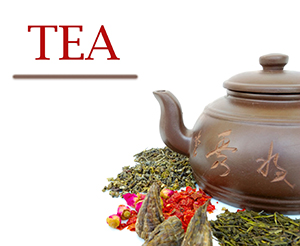Which tea for weight loss?

As researchers continue to investigate the multitude of compounds and polyphenols in tea that can impact weight loss, consumers can benefit by regularly drinking their favorite tea.
by Toffler Niemuth —
All teas, whether green, black, oolong or pu-erh, come from the same plant, namely Camellia sinensis. So why is there a discrepancy about which tea has the greatest impact on weight loss, and why do they work differently? It has to do with the environmental conditions for growing the plant, the timing of picking the leaves and their processing. These things all affect the polyphenol content, active compounds and caffeine levels in the tea.
Recently, green tea has been recognized as the leader among teas for aiding weight loss. However, black tea, because of its higher caffeine content, also has a weight-loss effect, as does oolong (wulong) tea. What about the less known pu-erh tea? How do these four teas compare for weight and fat loss?
Green tea — Research shows that the polyphenol in green tea, known as epigallocatechin gallate (EGCG), may be the active compound in fat loss. EGCG works by encouraging mature fat cells to commit suicide, a process known as apoptosis. In the human body, fat cells typically shrink in size but never leave the body. However, with the help of EGCG, the fat cells die off, thus making green tea surprisingly effective in aiding weight loss. In fact, author Timothy Ferriss in his book, The 4-Hour Body, recommends EGCG supplements for fat loss.
Black tea — Black tea has not received nearly the same acclaim for weight loss as green tea. However, its higher caffeine content does give it some weight-loss advantages. Caffeine increases adrenaline, which transforms fat into free fatty acids. These free fatty acids are then available for quick energy, hence the rush experienced when drinking caffeinated beverages. Releasing fat into quick energy means that it can be burned off. The polymerized polyphenol of black tea is also believed to have weight-management benefits.
Oolong tea — Research into oolong tea and its effect on weight is more preliminary than that of green or black tea. However, some laboratory experiments show that oolong tea increases energy expenditure, raising active and resting metabolic rates, which could make it slightly more effective than green tea. In China, oolong is also traditionally understood to prevent dietary fat absorption and is drunk during or after a greasy meal.
Pu-erh tea — The least known of these four teas is pu-erh tea. It is a fermented tea only grown in certain regions of China, making it one of the rarer and more expensive teas. When compared with green tea, research shows that pu-erh may be more effective at reducing overall weight. A Taiwanese study compared all four of these teas on the basis of their effects on triglyceride levels, cholesterol and adipose tissue. The result was that pu-erh had the healthiest overall effect on those three factors.
As researchers continue to investigate the multitude of compounds and polyphenols in tea that can impact weight loss, consumers can benefit by regularly drinking their favorite tea.
Toffler Niemuth is a holistic health coach who integrates nutrition, supplements and her understanding of Chinese and Indian medicine (Ayurveda) to help clients make the right changes to feel dramatically better. WorldVitae.com, BelightTea.com or 949-328-4823.
Reprinted from AzNetNews, Volume 33, Number 2, April/May 2014.





April 7, 2014
April/May 2014 Issue, Coffee and Tea, Weight issues